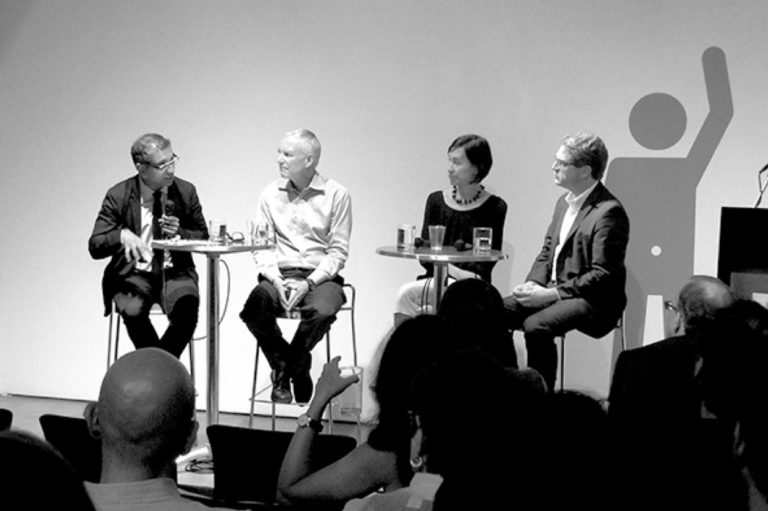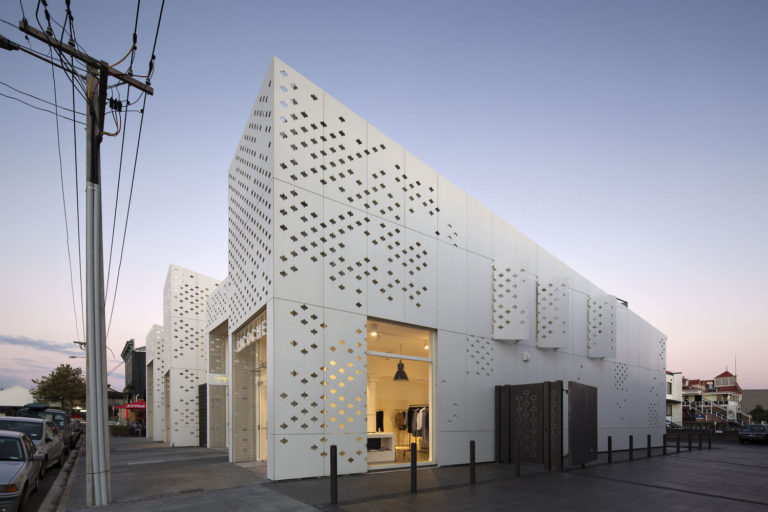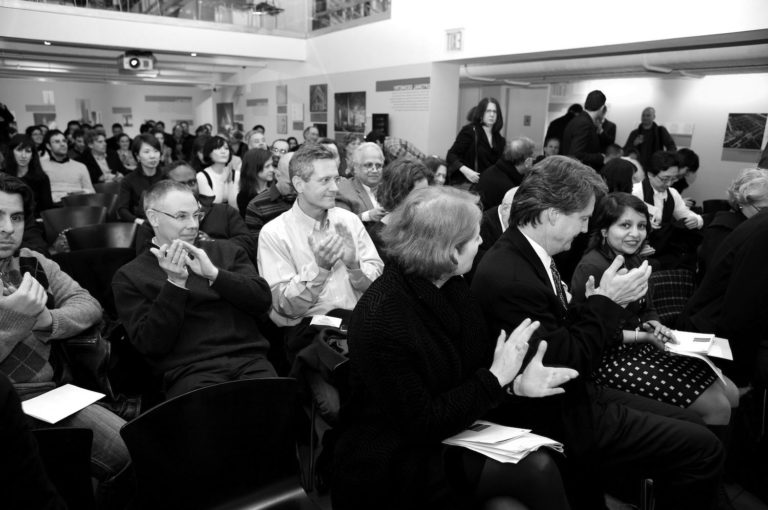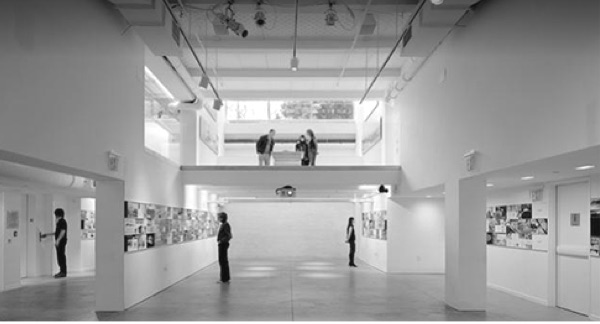by: Linda G. Miller
In this issue:
· New Museum for African American History and Culture Announced
· Public Radio Takes to the Street
· New York State Theater Adjusts Its Sounds
· A Shop Pops Up in Brooklyn
· An Elevated Park Runs Through It
· Putting the Parking in Ballpark
· NYIT Heads Upstate to the Estates
New Museum for African American History and Culture Announced
The team of Freelon Adjaye Bond/SmithGroup has been selected by The Smithsonian to design the National Museum of African American History and Culture to be located on the National Mall in Washington, D.C. The core design team consists of three firms — The Freelon Group will ensure that the design reflects the values and priorities of the museum and the Smithsonian; Adjaye Associates will focus on the formal development and refinement of the building design; and Davis Brody Bond Aedas will assure adherence of the design to the program and vision. The building design will take up to three years, with construction to begin in 2012. Set to open in 2015, the museum’s total cost is estimated to be $500 million. Freelon Adjaye Bond/SmithGroup was one of 22 teams that responded to the Request for Qualifications in the summer 2008, and six firms selected to participate in the design competition in January 2009.
Public Radio Takes to the Street
WNYC radio is on the air, online, and now on it’s on the street! The Jerome L. Greene Performance Space, designed by Kostow Greenwood Architects, is a state-of-the-art, multimedia performance space and broadcast studio on the ground floor of WNYC’s new home at Charlton and Varick in Hudson Square. The Greene Space was created for live performances, WNYC radio shows and video webcasts with concerts, theater, political and cultural discussions, film, and visual arts. A news ticker carves through space and out the windows, making breaking news available to passersby. The venue can seat 125, and millions more will be able to stream live audio and video events and download podcasts created in the studio. The space was registered as a relocation project with the USGBC and expects to achieve a LEED Silver rating. The use of recycled paper for printed materials, low-wattage LED theatrical lighting, a stage made of renewable bamboo, and interactive programs on environmental issues that the station broadcasts are just some of the ways Greene Space will promote being green.
New York State Theater Adjusts Its Sounds
An interior renovation of the David H. Koch Theater at Lincoln Center by JCJ Architecture will update the venue, providing an enriched experience for devotees of both the New York City Opera and New York City Ballet. Phase one of the improvements includes enlarging the orchestra pit and providing operable platforms replacing the stage lighting system, building a media center to allow hi-definition recording and broadcasting of performances, and installing 2,550 custom-designed seats. In addition, the lobbies will be refinished with new carpeting and wall covering. This will be the first major facelift for the 45-year-old, Philip Johnson-designed theater, which, until recently, was known as the New York State Theater.
A Shop Pops Up in Brooklyn
D-ASH Design has created a mobile lounge to showcase hip-hop music mogul Jay-Z’s line of apparel for Rocawear. The first location for the temporary space will be in Brooklyn, near the Atlantic Terminal. Mohair sofas, suede walls, custom zebra wood cabinetry, a 46-inch flat-screen TV, stereo system, and a custom gaming zone, transport the customer into the Jay-Z and Rocawear lifestyle. Fully stocked with merchandise, the 50-foot luxury liner will travel around the country to Jay-Z concerts and other events.
An Elevated Park Runs Through It
Designed by Morris Adjmi Architects, The High Line Building on West 14th Street in the Meatpacking District has topped out. The building, which was designed to LEED Gold standards, features 100,000 square feet of office space and 11 floors of retail space at the base of the park’s main entrance. The building has a dramatic steel-framed glass tower atop an existing five-story Art Deco masonry building that was a former meat processing facility. The offices on the upper floors have panoramic views of the Hudson River and the historic neighborhood through its floor-to-ceiling windows, while its lower floors offer direct views of the park, which also runs 103 feet through the building. The building is expected to be completed Fall 2009.
Putting the Parking in Ballpark
Trenton-based Clarke Caton Hintz (CCH), unveiled several parking garage facilities at the new Yankee Stadium that will provide recreational and park facilities for the surrounding community — which lost valuable park space when the new stadium was erected. The more than one-million-square-foot Ruppert Plaza Garage will accommodate 1,500 public parking spaces and features an expansive roof-deck to support the NYC Department of Parks and Recreation’s rooftop park. When completed in April 2010, it will include basketball and handball courts, a 400-meter athletic track, adult fitness equipment, an artificial turf soccer/football field, a 600-seat grandstand, site furnishings, and a comfort station that will house restrooms and changing areas.
The approximately 250,000-square-foot 164th Street Garage, a five-story garage with rooftop parking adjacent to the new stadium, will provide approximately 630 spaces. The garage’s façade, highlighted with blue lighting and stainless-steel mesh, matches the new stadium’s stone. Construction on the four-story, approximately 970-space 161st Street Garage will begin this summer. CCH and its design-build partners continue to be responsible for overseeing financing, design, building, operation, and maintenance of the garages. All aspects of the project now run through a newly created entity called Bronx Parking Development Corporation.
NYIT Heads Upstate to the Estates
DIA/WRKS has been selected to design the administrative offices for New York Institute of Technology’s School of Architecture and Design in Old Westbury, NY. With more than 100 wooded and landscaped acres, NYIT’s Long Island campus comprises several former North Shore estates, including the former C.V. Whitney estate buildings that were reconstructed for educational use. The design of the new building takes its cues from the architectural details of the estates’ former polo stables while contrasting them with clean, understated surfaces and angles. Among the distinctive elements in the design of the 2,500-square-foot space are original furniture pieces by Le Corbusier and Marcel Breuer, a rustic brick fireplace, and white marble mantles. The project is slated to begin in May and be completed by the fall.














